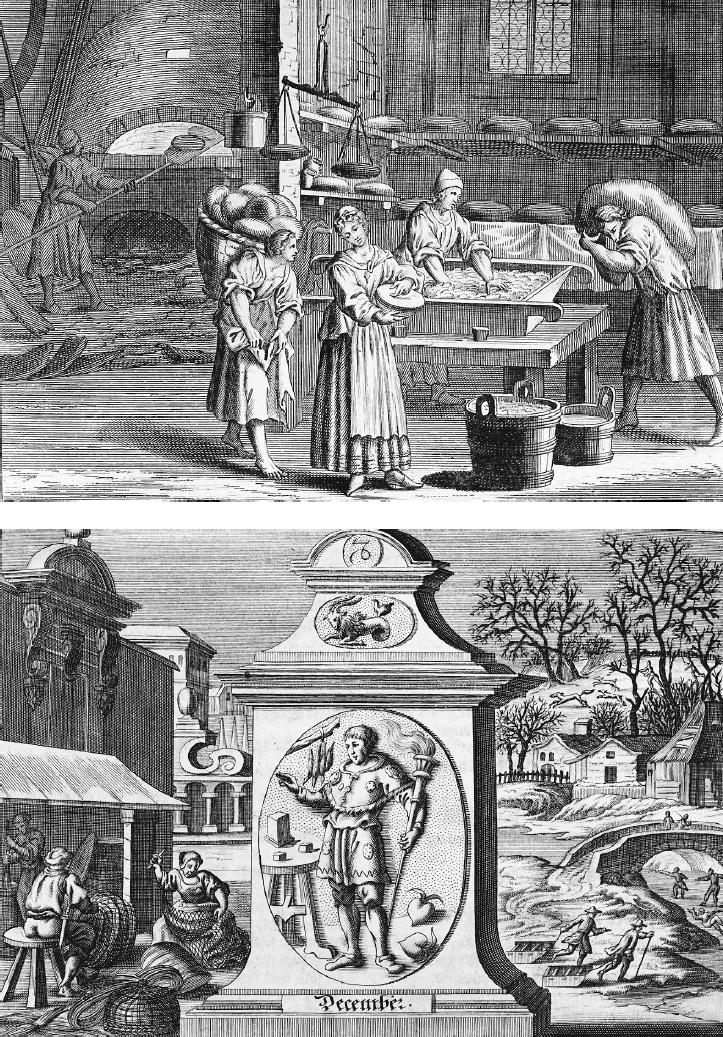Sources for Western Society: Printed Page 261
| 17-1 | | The Domestic Economy |
| The Guild System in Germany (1704–1719) |
While overseas expansion produced considerable economic change within Europe in the early modern period, most European manufacturing remained guild based for much of the era. The images included below demonstrate an important fact about the early modern guild system. While, with few exceptions, only male heads of a household were guild members, the family was the fundamental unit of the early modern economy, with wives, children, and servants all participating in the family’s economic activity.
The first image depicts bakers at work; the male in the background is kneading dough, the woman in the center is adding water to the dough, and the woman on the left is hauling a basket containing baked loaves. The oven is visible to the left, and loaves line the shelves behind. The second image shows basket makers, where again, both sexes are depicted at work at similar tasks. The woman in the background to the left appears to be churning butter.

From Franciscus Philippus Florinus, Oeconomus prudens et legalis, oder Allgemeiner Klug- und Rechts-verständiger Haus-Vatter (Nuremberg, Frankfurt, and Leipzig: Christoph Riegel, 1704–1719), pp. 528, 1191.
READING QUESTIONS
Question
What do these illustrations suggest about the sexual division of labor in preindustrial households?
Question
Judging by these pictures, what sorts of limitations might be inherent in the guild system of production?